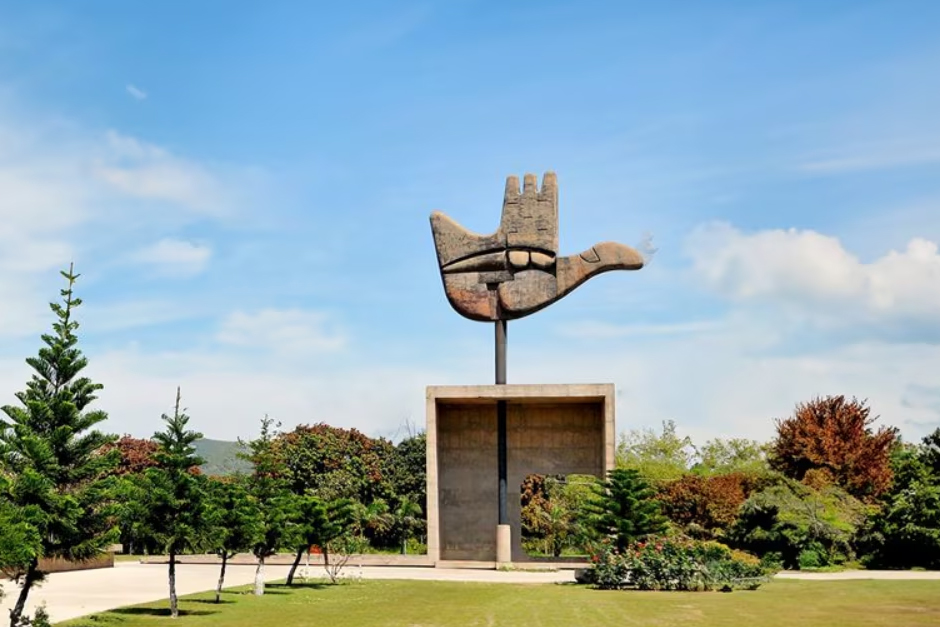A recent political storm brewing over the administrative future of Chandigarh, the shared capital of Punjab and Haryana, has seemingly been calmed by a significant clarification from the Ministry of Home Affairs (MHA). The controversy, primarily ignited by concerns in Punjab over perceived attempts to alter the Union Territory’s status through administrative changes linked to Article 240 of the Constitution, prompted the MHA to issue a statement reassuring stakeholders. This move aims to douse fears of Chandigarh’s permanent shift away from its unique, dual-capital designation.
The Genesis of the Row: Article 240 and Administrative Shifts
The latest episode in the long-standing debate over Chandigarh’s status began when the Union Ministry of Home Affairs initiated steps to implement central service rules for employees of the Chandigarh Administration, replacing the erstwhile Punjab service rules. This decision, according to critics, was an exercise of powers under Article 240 of the Constitution, which grants the President the authority to make regulations for the peace, progress, and good government of Union Territories. While seemingly an administrative adjustment, it sparked a major political uproar in Punjab.
Punjab, which views Chandigarh as its rightful capital – a claim rooted in the Punjab Reorganisation Act, 1966 – interpreted the move as a deliberate attempt by the Centre to dilute its claims and assert greater control over the Union Territory. Political parties across the spectrum in Punjab, including the ruling Aam Aadmi Party (AAP) and opposition Shiromani Akali Dal (SAD) and Congress, united in their condemnation. They argued that such administrative changes undermined the federal structure and went against the spirit of the various accords, particularly the Rajiv-Longowal Accord of 1985, which stipulated Chandigarh would ultimately be transferred to Punjab.
The perceived ‘centralisation’ of Chandigarh’s administration, coupled with the application of central service rules, fueled suspicions that the MHA was laying the groundwork for a permanent alteration of the UT’s status, potentially stripping Punjab of its historic claim and reducing its say in the city’s governance. The political temperature soared, with resolutions passed in the Punjab Assembly reiterating its exclusive claim over Chandigarh and demanding its immediate transfer.
MHA’s Clarification: Assuaging Concerns, Reaffirming Status Quo
Amidst this escalating political tension, the Ministry of Home Affairs stepped in to offer a crucial clarification. The MHA categorically stated that there is “no intention to make any changes in the present arrangement” for Chandigarh. A senior MHA official, speaking on condition of anonymity, clarified, “There is no intention to dilute the status of Chandigarh as the common capital of Punjab and Haryana, nor is there any move to alter its unique position as a Union Territory.”
The clarification aimed to address the core apprehension that the administrative changes, specifically concerning the service rules, were a precursor to a permanent takeover or a move to disassociate Chandigarh from its role as the capital for both states. The MHA emphasized that the application of central service rules was an administrative decision aimed at streamlining governance and bringing uniformity with other Union Territories, rather than a political statement on Chandigarh’s long-term future. It was reiterated that Chandigarh continues to function as the joint capital of Punjab and Haryana, and its status as a Union Territory remains unchanged.
This explicit statement serves as a significant reassurance for Punjab, which has historically been sensitive about any perceived encroachment on its claims over Chandigarh. The MHA’s intervention suggests an effort to de-escalate the situation and avoid further political confrontation on an issue deeply emotive for the region.
Political Reactions and the Way Forward
The MHA’s clarification has been met with a mix of cautious welcome and continued skepticism from political quarters in Punjab. While acknowledging the immediate assurance, many leaders reiterated their fundamental demand for Chandigarh’s eventual transfer to Punjab. A prominent political observer noted, “While the MHA’s clarification provides a temporary reprieve and addresses immediate fears of a unilateral change, the underlying issue of Chandigarh’s ownership remains unresolved. It’s a pause, not a resolution.”
Haryana, the other stakeholder, has largely remained silent on the recent row, maintaining its stance that Chandigarh is its rightful co-capital and any discussion on its transfer must also involve their consent and equivalent compensation. The MHA’s statement, by reaffirming Chandigarh’s status as a common capital, implicitly acknowledges Haryana’s stake as well.
The MHA’s clarification successfully diffused an immediate political crisis, preventing the issue from spiraling further into a major Centre-state confrontation. However, it underscores the enduring sensitivity surrounding Chandigarh’s status and its deep historical and political roots. While the “no intention to…” statement offers present relief, the larger question of Chandigarh’s future remains a complex issue, poised to resurface in India’s federal landscape.




